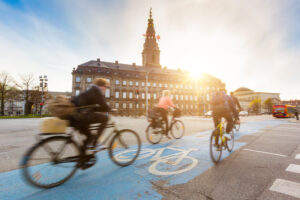
Cycling-Friendly Cities: Promoting Clean Air and Sustainable Urban Living
Air quality has long been associated with the sustainability movement. Countries across the world recognise the role that transport can play in worsening air quality. It’s largely down to the pollutants being released into the atmosphere from fuel, whether from a car, plane or another mode of transport.
As a result, many cities worldwide have adopted a mission to clean up their air quality. Cycling schemes have been a big part of this. Infrastructure, policies and urban planning with a greater focus on sustainability have been key in shaping these changes to our habits.
The more appealing you make something, the more likely people are to hop onboard and make the change. With the right infrastructure in place and a good quality road bike, cycling to work or for leisure will be a lot more appealing to the masses.
Here’s how cities are becoming cycle-friendly in the mission to promote clean air and more sustainable living in urban areas:
The Link Between Transportation and Air Quality
Unsurprisingly, urban areas are among the worst for pollution and poor air quality. Pollutants such as nitrogen oxides, particulate matter and carbon monoxide can have serious effects not only on the environment but on people’s health too. According to studies, air pollution from fossil fuels generated from transport and other sectors kills five million people every year. Statistics like these showcase the urgency we and decision-makers should have when it comes to air quality and mitigating the impacts that transport can have on this.
Advantages of Cycling as a Sustainable Mode of Transportation
Cycling is a mode of transport that emits zero emissions. If more people switch to cycling instead of driving, it would make a huge difference in reducing the amount of pollution released into the air. Plus, it can help to reduce traffic congestion. On top of this, cycling has clear benefits for our mental and physical well-being, which can reduce the level of strain on our health services. This gives us even more reason to encourage more cyclists onto the roads.
Designing Cycling-Friendly Cities
When it comes to designing cycle-friendly cities, decision-makers need to make it a more attractive and practical transport option. This means creating safe, useable routes through the city, as well as convenient and secure bike parking facilities.
Copenhagen is a brilliant example of a city that normalises riding a bike to work, for errands and leisure. In fact, more than 60% of people cycle to work or school by bike. Over 100 miles of cycle highways have undoubtedly helped with this, as well as a large amount of investment in cycling infrastructure.
The Role of Urban Planning and Policy
As has been highlighted in the example of Copenhagen, investment and commitment from key decision makers is key to the delivery of a cycle-friendly city. Without the right infrastructure, cycling in urban areas simply isn’t safe or practical. This shows how important urban planning decisions can be, as well as sufficient funding to put proposals into action.
Subsidies for e-bikes is one way of encouraging this. Other considerations include zoning regulations and pedestrian and cycle-friendly transport policies that put zero-emission modes of transport before the likes of cars.